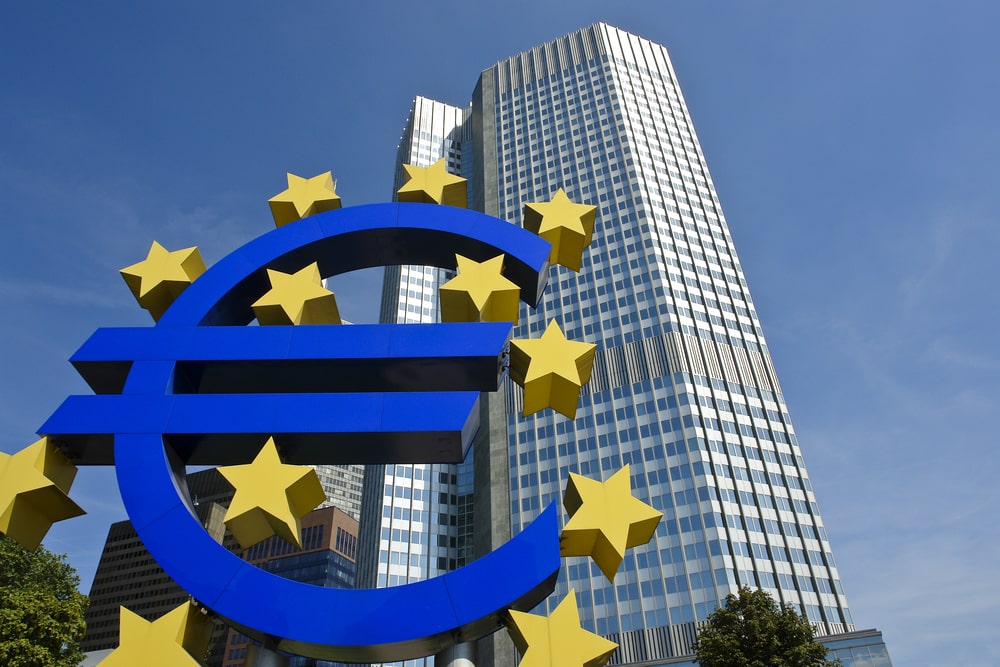

Summary
- Last week saw whipsaw moves in market pricing for the ECB rate decision on 14 September.
- The net result is that the market now prices only ~6 basis points (bp) of tightening (or a ~24% probability of a 25bp hike) for the September ECB rate decision.
- That is down from the ~14.5bp (or ~60% probability of a 25bp hike) seen in the run-up to Jackson Hole and immediately after the release of German inflation data last week.
- Consequently, heading into the ECB meeting, we favour taking tactical positions to benefit from a potential ECB rate hike not priced by markets.
This article is only available to Macro Hive subscribers. Sign-up to receive world-class macro analysis with a daily curated newsletter, podcast, original content from award-winning researchers, cross market strategy, equity insights, trade ideas, crypto flow frameworks, academic paper summaries, explanation and analysis of market-moving events, community investor chat room, and more.
Summary
- Last week saw whipsaw moves in market pricing for the ECB rate decision on 14 September.
- The net result is that the market now prices only ~6 basis points (bp) of tightening (or a ~24% probability of a 25bp hike) for the September ECB rate decision.
- That is down from the ~14.5bp (or ~60% probability of a 25bp hike) seen in the run-up to Jackson Hole and immediately after the release of German inflation data last week.
- Consequently, heading into the ECB meeting, we favour taking tactical positions to benefit from a potential ECB rate hike not priced by markets.
Market Implications
- For readers with access to the wholesale over the counter (OTC) markets, we see value in paying the September ECB-dated €STR OIS. With so little priced for the September meeting, the risk/reward payoff is very attractive.
- For those without access to the €STR OIS market, we would proxy with a short-term tactical short position in the 2-yr German Schatz.
Introduction
G10 markets have had a choppy, volatile summer characterised by rangebound and challenging trading conditions. But this month should bring more focus, with key central banks announcing rate decisions in the next few weeks.
The US Federal Reserve (Fed), European Central Bank (ECB) and Bank of England (BoE) will all set policy. We watch the ECB most closely because market expectations for the meeting have fluctuated materially in the past week or two.
While the market has firmly expected the Fed to pause and BoE to hike, the ECB decision has seen hawkish pricing give way to the current dovish market expectations. I agree with my Macro Hive colleague Henry Occleston who says the September ECB meeting is too close to call.
We think the probability for an ECB hike should be nearer (or even just above) 50%, as it was before Jackson Hole and immediately after the release of German inflation data last week. With the market-implied probability less than half of that, we think that there is value in tactically fading the recent dovishness for the September meeting.
The best way for wholesale market participants to do this is to pay the September ECB-dated €STR OIS.
The risk/reward ratio on this trade, should the ECB hike 25bp against the current odds, is roughly three to one. We would take that payoff any day.
For those traders without access to OTC derivatives like the OIS market, a decent proxy would be to short the German 2-year Schatz. This contrasts our bigger-picture, longer-term bullish view on the German short end. But for the very near term (i.e., tactically), we see value in fading the broader trend of lower yields for a week or two.
ECB September Meeting Market Pricing Has Been Volatile
Throughout August, market expectations for the ECB’s September meeting have ridden a rollercoaster. Current pricing is the most dovish since the meeting came into focus after the 27 July hike.

Pricing has become so dovish that the market does not fully price another single 25bp rate rise. Peak market hawkishness comes for the December meeting, where ~15bp of tightening is currently priced (i.e., just below a 60% probability of a 25bp rate hike).
For the meeting on 14 September, only 6bp of tightening is priced – slightly less than a one-in-four probability of a 25bp rate hike.
ECB Speeches Have Been Numerous and Mixed
Speeches from members of the ECB Governing Council (GC) have been unrelenting in recent weeks.
While ECB President Christine Lagarde’s speech at Jackson Hole drew the most attention, her remarks were very noncommittal regarding the 14 September rate decision.
Other communications from the GC have been more explicit. On the eve of Jackson Hole, market expectations tilted dovishly due to a Reuters sources piece revealing momentum is growing for a pause in rate hikes on 14 September. The piece said GC members were increasingly concerned about deteriorating growth prospects in the Eurozone and suggested that the ‘pause camp’ is now growing.
After that, around Lagarde’s Jackson Hole speech, her GC colleague Joachim Nagel also adopted a wait-and-see approach.
Additionally, some GC members delivered hawkish messaging. These included Martins Kazaks (who said he would err on the side of raising interest rates) and Robert Holzmann (who said that the ECB probably needs to hike again in September).
Likewise, over this past weekend, GC member Pierre Wusnch said the ECB might need to raise interest rates further before pausing its cycle.
Perhaps the most important messaging, and (we would argue) the reason for the most recent dovish tilt in pricing at the end of last week, though, came from Isabel Schnabel.
Along with Holzmann and a handful of others, Schnabel has consistently been one of the more hawkish voices on the GC during the current tightening cycle. In a speech on 31 August, Schnabel voiced her usual concern that inflation remains ‘stubbornly high’ and may need to be offset by further policy tightening.
Yet Schnabel also cited weaker growth prospects than ‘that foreseen in the baseline scenario,’ balancing her usual hawkish tone.
And that bit caught the markets’ attention.
Putting two and two together, it could be that Schnabel was referring to the recent PMI releases, which were very weak across the board. This echoes the Reuters sources piece from the week before, when market pricing also tilted in a sharply dovish direction.
Guindos Remarks and ECB July Meeting Account are the Tell
To our mind, though, the market is probably missing the key point.
The ECB has a single mandate: price stability. In concrete terms, this means the GC ‘considers that price stability is best maintained by aiming for 2% inflation over the medium term.
And, while growth prospects cannot be ignored, they are necessarily and statutorily secondary to price stability.
To gauge inflation prospects and the appropriate policy response, the ECB relies heavily on its staff forecasts. The projections are published four times annually – in March, June, September and December. The ECB, therefore, will use the updated set of forecasts due this month to formulate their next monetary policy decision.
Uncertainty over the inflation outlook was an important theme in the account of the July meeting published last week.
And, in the account, looking ahead to the September meeting, some members of the GC noted ‘that it was quite probable that the September ECB staff projections would revise the inflation path sufficiently downwards towards 2%, without the need for another interest rate hike in September.’
This is a logical and compelling argument. Lower inflation forecasts would indeed provide the cover for the ECB to keep rates unchanged.
However, a speech from ECB Vice President Luis de Guindos last week asserted that although economic growth prospects are worse staff forecasts anticipated, the inflation projections will be similar to those put forward in June.
And this is the key point.
Although the GC will not be immune to the darkening economic prospects, their single mandate prescribes that inflation is the critical determinant of monetary policy. And, if the September staff inflation projections resemble those from June, then the case for not raising rates is undermined.
Our Favoured Tactical Trades Into the ECB Decision
Accordingly, we think the market is underpricing a hike on 14 September. A one-in-four probability is too low. To capitalize, we favour two tactical trades in the Eurozone short end.
Paid September ECB-Dated ESTR OIS
The most direct, granular way to play any perceived mispricing of ECB policy actions for any meeting is through the ECB-dated €STROIS market.
OTC, meeting-to-meeting instruments exist in the wholesale rates markets, and readers with access to these markets could play the probable mispricing by paying the September ECB-dated €STROIS price.
Currently trading at ~6bp, the risk/reward ratio for this trade is roughly three to one. We like this payoff, especially for a short-term, tactical trade.
Tactically (and Temporarily) Bearish 2-Year German Schatz
For those readers unable to access the ECB-dated €STROIS market, the 2-year German Schatz should act as a reasonable proxy.
As the probability of an ECB rate hike has diminished late last week, the 2-year German yield has also fallen.

This may seem inconsistent with our bullish call for 2-year Germany published last week.
On the surface, this is the correct.
Our view on any rise in German short-end yields is purely tactical, however, and very short term.
We still think short-end German yields will fall (together with short-end UST and UK gilt yields) in the coming months. But in the run up to the ECB rate decision next week, we favour a tactical position to play the asymmetric underpricing of an ECB rate rise next week.
